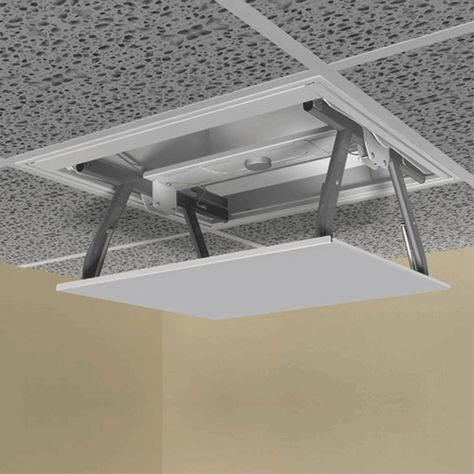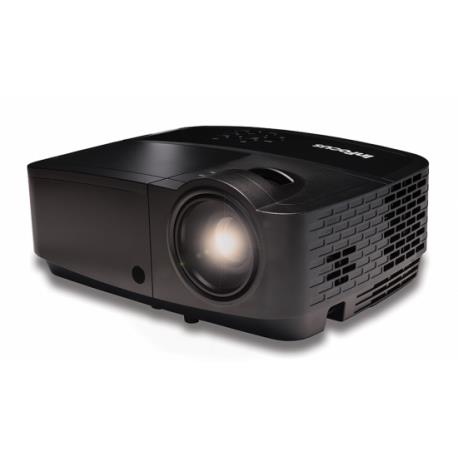
When it comes to installing audiovisual equipment, where and how it gets mounted is an important aspect. The wrong installment can be detrimental to its intended application, but there’s a mount for every need. Here’s a rundown on types of mounts for audiovisual equipment.
TV Mounts
Mounting the television to the wall or ceiling frees up more space in smaller rooms. Not all mounts are the same, however. Some wall mounts have more mobility, which can be beneficial when viewers change locations in the room.
- Low Profile Mounts
The low-profile wall mount sits close to the wall, and is the easiest to install. However, after the television is mounted, it cannot be adjusted without re-hanging the mount. This can be an issue if the viewing angle needs to change or the room is rearranged.
- Tilting Mounts
A tilting wall mount gives users the option to tilt it vertically, but not horizontally. This allows the television to be installed higher on the wall if necessary, while still providing optimal viewing by adusting the tilted of the screen.
- Full-Motion Mounts
In large rooms where the viewing angle needs to be changed, a full-motion wall mount is the best choice. These have an arm that allows the user to adjust the horizontal viewing angle by moving it away from the wall. It is the most expensive and difficult set up of the wall mounts, but the viewing flexibility makes it worth it.
- Ceiling Mounts
Sometimes the wall or it’s material is not capable of supporting a wall mount, such as a brick wall. A ceiling mount is the solution in this case. Ceiling mounts can also rotate and tilt in all directions for the perfect viewing angle.
Projector Mounts
Mounting a projector can be a tricky task when dealing with screen sizes and throwing ratios. Thankfully, there are a lot of options when it comes to projector mounts.
- Ceiling Mounts
When considering ceiling mounts, users must decide if they want a dedicated or universal style of mount. Dedicated mounts have a specific pattern of screw holes that align with the array of screw holes on a specific projector make. Universal mounts have moveable screw holes to accommodate many different projectors of varying sizes, which can be beneficial in the long run.
- Short Throw Mounts
Short throw projectors need a specific type of mount due to their throw ratio. They need to be installed inches from the screen. Most of these are wall mounts that have a telescoping arm to accommodate the distance requirements. There are also some ceiling mounts available when a wall mount won’t work.
- Stacking Mounts
In many applications, stacking projectors is necessary to increase lumens in certain lighting. To accommodate this, there are stackable mounts allowing for one projector to sit atop another. These are generally mounted from the ceiling, but can also sit atop a table.
- Projector Lifts
While also installed on the ceiling, these mounts hide the projector when it isn’t in use. They are motorized and can be raised and lowered with the push of a button.
Speaker Mounts
If speakers are not in the correct position, the audio could be distorted. Finding the right spot for speakers can be challenging, but finding the mount to make it possible is not. Here are some speaker mount options:
- Tilt and Swivel Mounts
Used to secure speakers to the wall or ceiling, these have arms that can be swiveled. This allows for adjustment of the audio if necessary. Tilt and swivel mounts are often used in surround sound applications.
- Fixed Wall and Ceiling Mounts
To keep speakers in one set position, fixed wall and ceiling mounts are available. Many houses of worship or auditoriums have fixed ceiling and wall speakers to keep audio going in a set direction or pattern.
- TV Speaker Mounts
If the speakers need to accompany a television or interactive screen, they can be center channel mounted or side mounted. Both of these styles attach to the mount behind the screen and can move with the television to point at the viewer.
- Speaker Stands
In areas where excess floor space is available, speaker stands are an option. They are generally made of poles with a flat base. Easy adjustability for position and height make them popular.
Camera Mounts
Cameras are used in all kinds of commercial applications from recording or live streaming lectures and speeches to video conferencing for collaboration efforts.
- Ceiling Mounts
Many spaces use ceiling mounts for their video needs. Ceiling mounts can be mounted directly on the surface of the ceiling and remain completely visible. This is called a surface mount. A flush mount is when the camera is mounted inside the ceiling with only a portion of the camera and housing visible. A pendant mount hangs down from the ceiling like a pendant, which can be beneficial in situations where the camera needs to sit more at eye level like video conferencing or when more viewing angles are necessary.
- Wall Mounts
With some wall mounts, the camera’s housing is connected to an arm so it sits out from the wall a few inches. Some of these mounts have an inside cable gland to protect the cable. For video conferencing needs, look at low-profile wall mounts. They are ideal for mounting the camera above a monitor that is also on a low-profile mount. Many are universal and work with all kinds of cameras, large or small.
AV Superstore has all kinds of mounts for your audiovisual equipment. Talk with our AV specialists to find out which one is right for your application.


